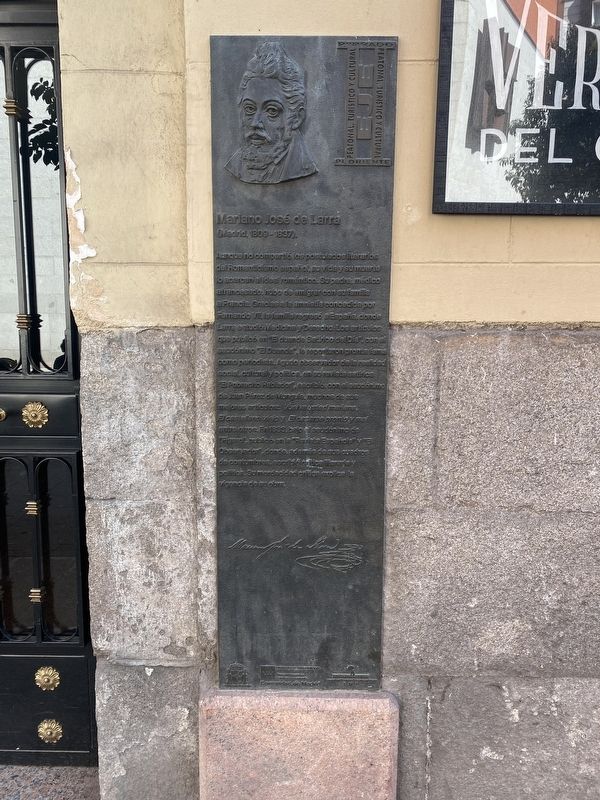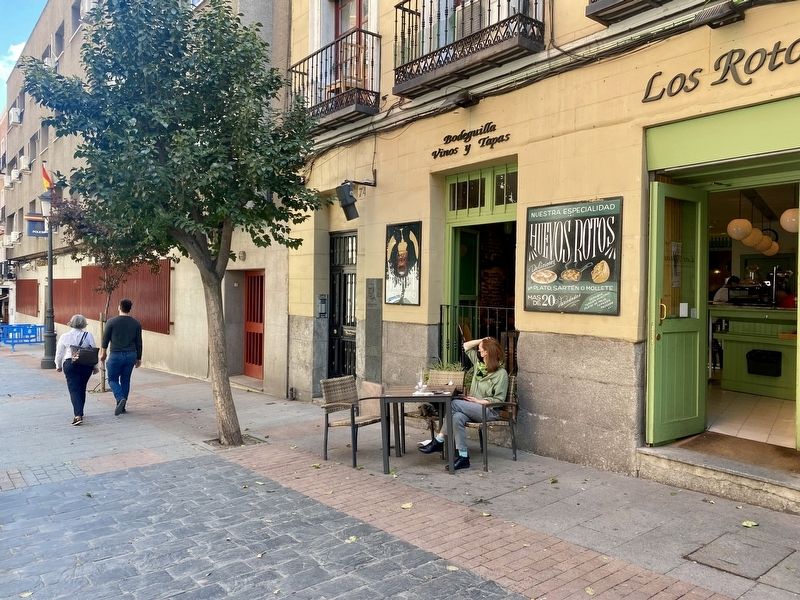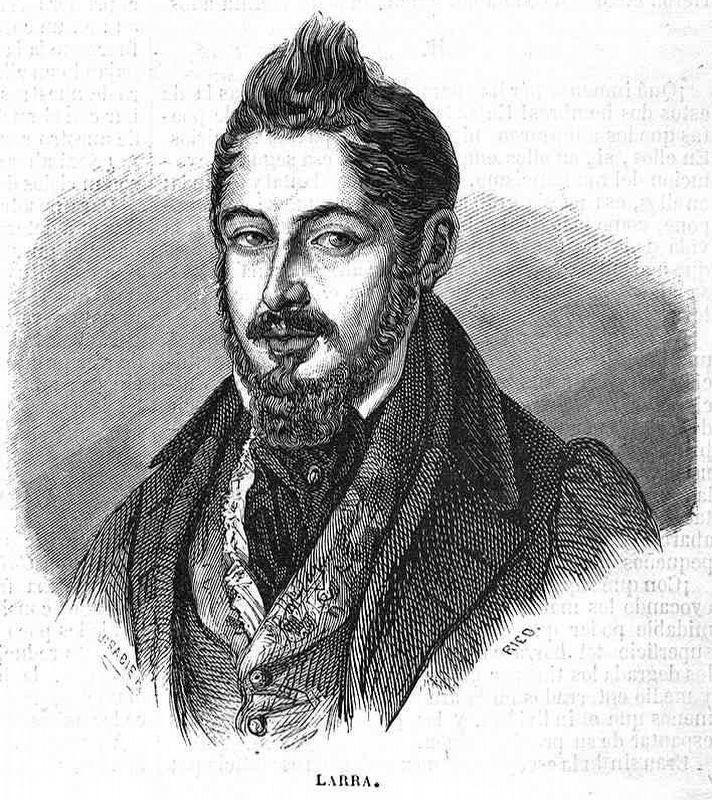Cortes in Madrid, Spain — Southwestern Europe (Iberian Peninsula)
Mariano José de Larra (Madrid, 1809-1837)
Although he did not share the literary tenets of Spanish Romanticism, his life and death brought him closer to the romantic ideal. His father, a Francophile doctor, had to emigrate with his family to France. Thanks to the amnesty granted by Fernando VI, the family returned to Spain, where Larra studied Medicine and Law. The articles he published in "El duende Satirico del Día", under the pseudonym "El Duende" ("The Leprechaun") brought him early fame as a journalist. A keen observer of social, cultural and political reality, in his satirical magazine "El Pobrecito Hablador", he wrote many of his best articles under the pseudonym of Juan Pérez de Munguía: Vuelva usted mañana ("Come back tomorrow"), El castellano viejo ("the old Castilian") and El casarse pronto y mal ("Marrying early and wrong"), amongst others. In 1833, under the pseudonym "Figaro" he published in the "Revista Española" and "El Observer" where in addition to his depictions of customs, he wrote literary and political criticism. His critical sharpness explains the validity of his work.
Topics. This historical marker is listed in these topic lists: Arts, Letters, Music • Communications. A significant historical date for this entry is February 13, 1837.
Location. 40° 24.774′ N, 3° 41.705′ W. Marker is in Madrid. It is in Cortes. Marker is on Calle de las Huertas just east of Calle de Jesús, on the left when traveling west. Touch for map. Marker is at or near this postal address: Calle de las Huertas 74, Madrid 28014, Spain. Touch for directions.
Other nearby markers. At least
8 other markers are within walking distance of this marker. Leandro Fernández de Moratín (within shouting distance of this marker); José María Manresa Navarro (within shouting distance of this marker); Nicolás Fernández de Moratín (within shouting distance of this marker); León Felipe (about 120 meters away, measured in a direct line); Luisa Carnés (about 150 meters away); Félix Lope de Vega (Madrid, 1562 - 1635) (about 150 meters away); Sor Marcela de San Félix (about 180 meters away); Miguel Cervantes Saavedra (about 210 meters away). Touch for a list and map of all markers in Madrid.
Also see . . . Mariano José de Larra (Wikipedia).
Excerpt: Mariano José de Larra y Sánchez de Castro (24 March 1809 – 13 February 1837) was a Spanish romantic writer and journalist best known for his numerous essays and his infamous suicide. His works were often satirical and critical of the 19th-century Spanish society, and focused on both the politics and customs of his time....Larra lived long enough to prove himself a great prose-writer during the 19th century. He wrote at great speed with the constant fear of censor before his eyes, although no sign of haste is discernible in his work. His political instinct, his abundance of ideas and his forcible, mordant style would possibly have given him one of the foremost positions in Spain....Some of his phrases like Vuelva usted mañana (come back tomorrow) or Escribir en España es llorar (To write in Spain is to cry) are still applied to chastise present-day ills.(Submitted on October 30, 2022.)
Credits. This page was last revised on February 2, 2023. It was originally submitted on October 30, 2022, by Andrew Ruppenstein of Lamorinda, California. This page has been viewed 104 times since then and 23 times this year. Photos: 1, 2, 3. submitted on October 30, 2022, by Andrew Ruppenstein of Lamorinda, California.


